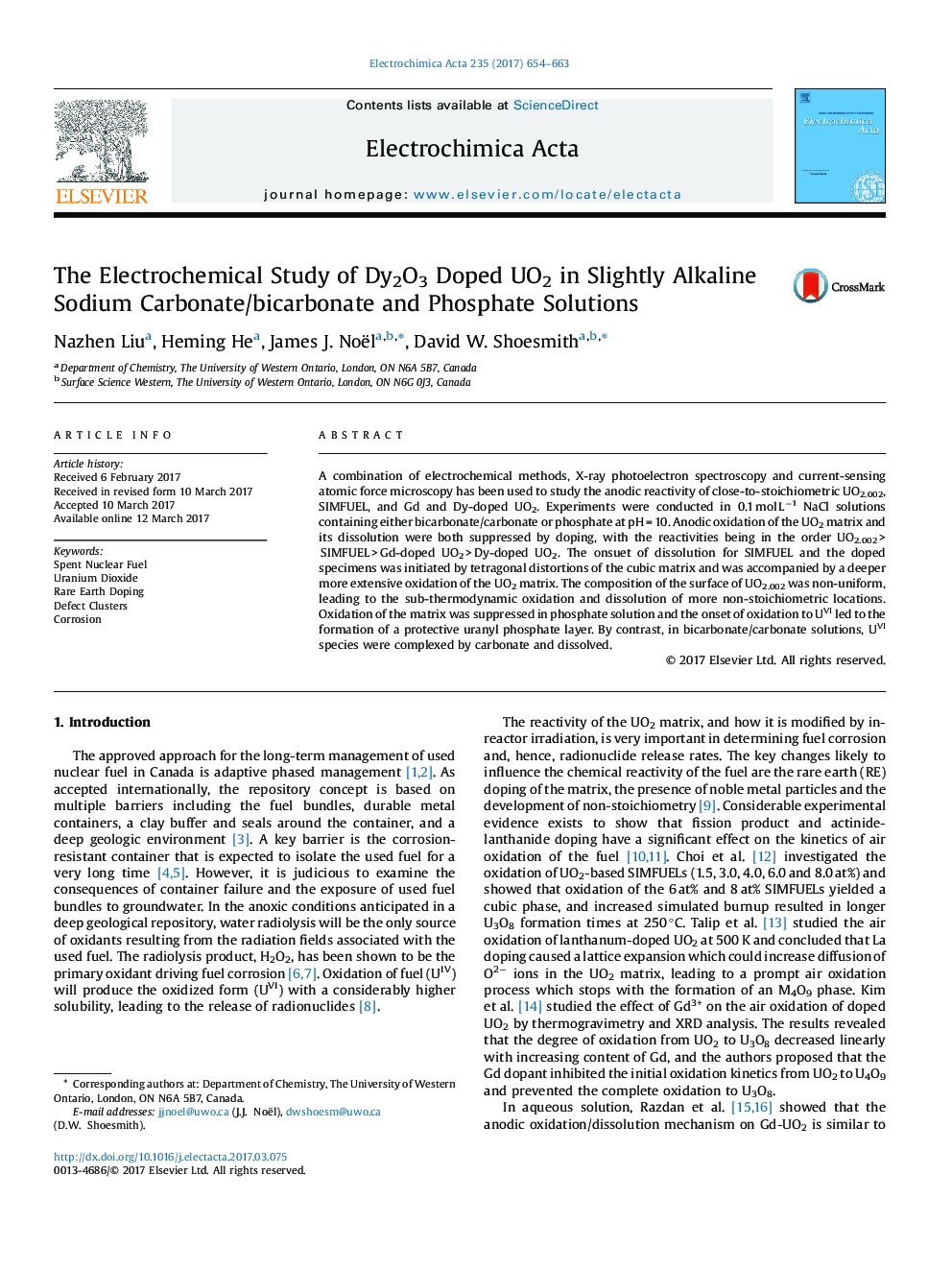| Article ID | Journal | Published Year | Pages | File Type |
|---|---|---|---|---|
| 6471728 | Electrochimica Acta | 2017 | 10 Pages |
A combination of electrochemical methods, X-ray photoelectron spectroscopy and current-sensing atomic force microscopy has been used to study the anodic reactivity of close-to-stoichiometric UO2.002, SIMFUEL, and Gd and Dy-doped UO2. Experiments were conducted in 0.1 mol Lâ1 NaCl solutions containing either bicarbonate/carbonate or phosphate at pH = 10. Anodic oxidation of the UO2 matrix and its dissolution were both suppressed by doping, with the reactivities being in the order UO2.002 > SIMFUEL > Gd-doped UO2 > Dy-doped UO2. The onset of dissolution for SIMFUEL and the doped specimens was initiated by tetragonal distortions of the cubic matrix and was accompanied by a deeper more extensive oxidation of the UO2 matrix. The composition of the surface of UO2.002 was non-uniform, leading to the sub-thermodynamic oxidation and dissolution of more non-stoichiometric locations. Oxidation of the matrix was suppressed in phosphate solution and the onset of oxidation to UVI led to the formation of a protective uranyl phosphate layer. By contrast, in bicarbonate/carbonate solutions, UVI species were complexed by carbonate and dissolved.
